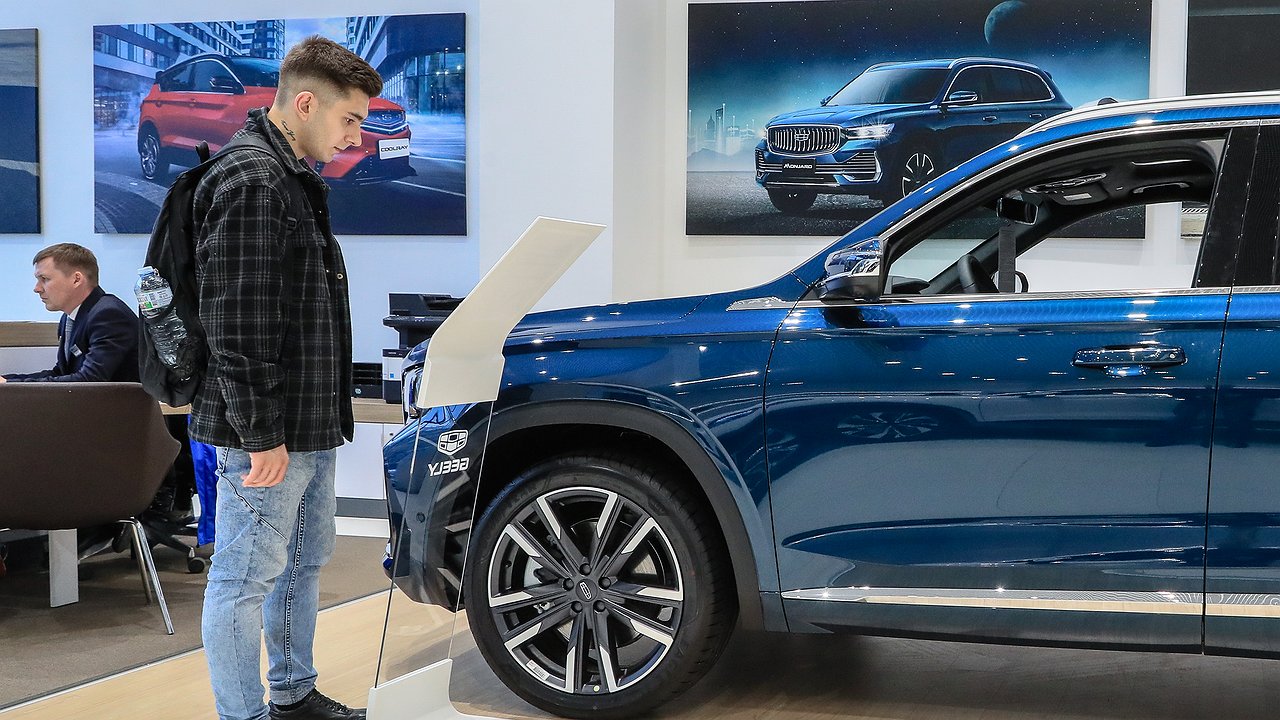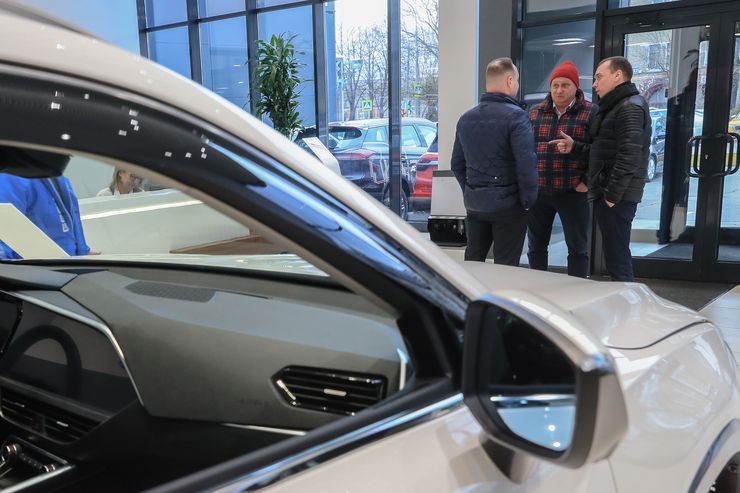The bony hand of the market grabs Russian drivers by the throat
- December 12, 2023
- 0
The decline in passenger car sales in November after a long period of sustained growth came as no surprise to anyone. Too many factors have come together to
The decline in passenger car sales in November after a long period of sustained growth came as no surprise to anyone. Too many factors have come together to

It was clear that the Russian car market had a good chance of slowing down in its triumphal march to lost heights. Only the lazy did not write about the chains with which our financial and economic geniuses enveloped him. A sharp increase in recycling collection, a dramatic increase in the discount rate, a decline in the ruble exchange rate and a meager degree of localization of assembly processes and component production drove up prices, which could only affect sales volumes.
As the negative factors piled up, the market slowly started losing growth rates. For a while everything went more than fine. July compared to June brought an increase in sales by 14.2%, August compared to July – by 14.6%. But September was no longer encouraging: only +0.6%. It was followed by a lackluster October with a gain of 1.7%. And finally, November showed a decline of 2.3%.
All this is not surprising, but more or less expected. What is also surprising are the conclusions drawn based on last month’s results. “The rapid growth that has emerged since the beginning of the year has slowed down and perhaps even stopped,” noted Sergei Udalov, executive director of analytics firm Autostat. — In December, as has always been the case, we can expect an increase, but distributors and dealers are well aware that there will no longer be a strong increase in sales. We are entering a new phase of the market, which is characterized by intense competition between brands and models.”
As the hero said in a famous movie: “Everyone is as wrong as he can.” In this case I mean the statement about the imminent approach of a period of uncompromising competition.
A subconscious desire for wishful thinking can be a cruel joke for any analyst, especially if it is coupled with an obsessive desire to find the “invisible hand of the market,” which may have been relevant in Adam Smith’s day, but two and one half a year ago. centuries later, it has completely compromised its role as a universal regulator.
Let’s look at the numbers. Now, passenger car sales in the market have approximately reached September 2021 levels. If they continue to stock just over 110,000 cars per month, then in the optimistic scenario in 2024, or in the base case in 2025, we will be able to reach the coveted sales volume of 1.5 million cars – that is, the minimum acceptable market saturation . Then it will be possible to speak of a form of competition, although this will still seem somewhat naive given the dominance of transnational corporations in the world.
It should be noted that the car market in our country is generally very strange, with huge imbalances and distortions. The vast majority of produced and imported passenger cars have entered the expensive price segment as a result of a crazy price race and feel fine there. Zarathustra has not allowed our car dealers to rewrite prices downwards, does not allow it and will not allow it in the future. There is no competition there, but rather a monopolistic conspiracy.
The weighted average price of a Chinese car is 3.37 million rubles. With an average salary of 50 thousand, a Russian driver will have to work hard for more than five years without drinking or eating to earn this. If we take into account the most necessary expenses, this period will increase to 10 years – slightly longer than the life of a modern scrap car.
The vast majority of Russian drivers are redundant in this celebration of life. Their fate is the secondary market and the domestic automotive industry, where the weighted average price of a new vehicle is currently only (!) 1.15 million, but these “cheap” cars will not be enough for us for a long time.


It was clear that the Russian car market had a good chance of slowing down in its triumphal march to lost heights. Only the lazy did not write about the chains with which our financial and economic geniuses enveloped him. A sharp increase in recycling collection, a dramatic increase in the discount rate, a decline in the ruble exchange rate and a meager degree of localization of assembly processes and component production drove up prices, which could only affect sales volumes.
As the negative factors piled up, the market slowly started losing growth rates. For a while everything went more than fine. July compared to June brought an increase in sales by 14.2%, August compared to July – by 14.6%. But September was no longer encouraging: only +0.6%. It was followed by a mediocre October with a gain of 1.7%. And finally, November showed a decline of 2.3%.
All this is not surprising, but more or less expected. What is also surprising are the conclusions drawn based on last month’s results. “The rapid growth that has emerged since the beginning of the year has slowed down and perhaps even stopped,” noted Sergei Udalov, executive director of analytics firm Autostat. — In December, as has always been the case, we can expect an increase, but distributors and dealers are well aware that there will no longer be a strong increase in sales. We are entering a new phase of the market, which is characterized by intense competition between brands and models.”
As the hero said in a famous movie: “Everyone is as wrong as he can.” In this case I mean the statement about the imminent approach of a period of uncompromising competition.
A subconscious desire for wishful thinking can be a cruel joke for any analyst, especially if it is coupled with an obsessive desire to find the “invisible hand of the market,” which may have been relevant in Adam Smith’s day, but two and one half a year ago. centuries later, it has completely compromised its role as a universal regulator.
Let’s look at the numbers. Now, passenger car sales in the market have approximately reached September 2021 levels. If they continue to stock just over 110,000 cars per month, then in the optimistic scenario in 2024, or in the base case in 2025, we will be able to reach the coveted sales volume of 1.5 million cars – that is, the minimum acceptable level. market saturation . Then it will be possible to speak of a form of competition, although this will still seem somewhat naive given the dominance of transnational corporations in the world.
It should be noted that the car market in our country is generally very strange, with huge imbalances and distortions. The vast majority of produced and imported passenger cars have entered the expensive price segment as a result of a crazy price race and feel fine there. Zarathustra has not allowed our car dealers to rewrite prices downwards, does not allow it and will not allow it in the future. There is no competition there, but rather a monopolistic conspiracy.
The weighted average price of a Chinese car is 3.37 million rubles. With an average salary of 50 thousand, a Russian driver will have to work hard for more than five years without drinking or eating to earn this. If we take into account the most necessary expenses, this period will increase to 10 years – slightly longer than the life of a modern scrap car.
The vast majority of Russian drivers are redundant in this celebration of life. Their fate is the secondary market and the domestic automotive industry, where the weighted average price of a new vehicle is currently only (!) 1.15 million, but these “cheap” cars will not be enough for us for a long time.
Source: Avto Vzglyad
Donald Salinas is an experienced automobile journalist and writer for Div Bracket. He brings his readers the latest news and developments from the world of automobiles, offering a unique and knowledgeable perspective on the latest trends and innovations in the automotive industry.